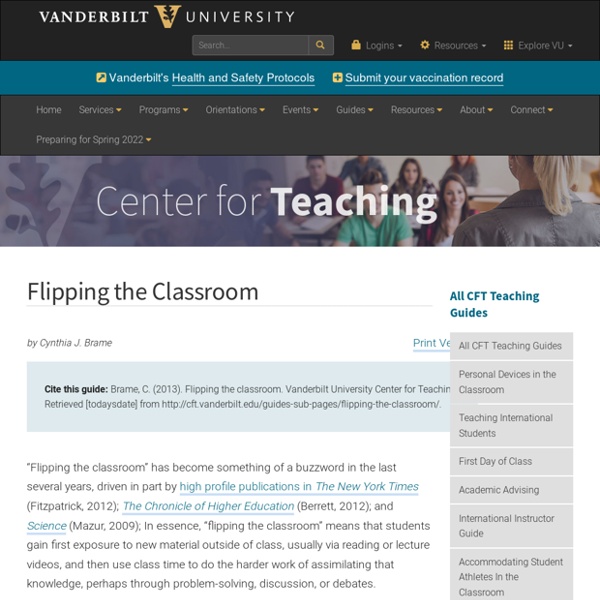Rosenshine Masterclass Captured. Free CPD!
In response to demand for my workshops and masterclasses on Rosenshine’s Principles of Instruction, I’ve recorded a screen capture of me talking through the slides I use for my one-day events. The slides are available here I have posted the links on youtube in a playlist that can be found here: There is 2 1/2 hours of material there so take your time to browse. If you would like to book me for in-school CPD please do – just follow the teacherhead-consulting tab at the top of this website.
Learning Visually Online: Transition to Remote Teaching in 4.501
Professor Lawrence Sass’s Advanced Design and Digital Fabrication course (4.501) is deeply engaged with the physical world. Students learn the processes of designing, modeling, and rendering, and later fabricate furniture, buildings, and other structures. Adapting to online When Prof Sass’s plan to construct a tiny house on campus this spring with his students was quashed due to the course moving online, Sass was faced with the challenge of re-engineering his curriculum to work within the confines of online teaching and learning. Normally, in the first half of 4.501, students focus on skills acquisition such as 3-D printing, laser cutting, and CNC machining.
A Beginner's Guide to Flipped Classroom
The Flipped Classroom is a blended learning model in which traditional ideas about classroom activities and homework are reversed, or "flipped." In this model, instructors have students interact with new material for homework first. They then use class time to discuss the new information and put those ideas into practice.
Applied Behavior Analysis (ABA)
What is Applied Behavior Analysis? Applied Behavior Analysis (ABA) is a therapy based on the science of learning and behavior. Behavior analysis helps us to understand:
Create a Growth Culture, Not a Performance-Obsessed One
Executive Summary Many C-Suite leaders are focused on how to build higher performance cultures. The irony, we’ve found, is that building a culture focused on performance may not be the best, healthiest, or most sustainable way to fuel results.
Virtualizing Project-based Learning in Architecture
Before the MIT Department of Architecture transitioned fully to remote education in mid-March 2020, and even before it became the first academic program in architecture in the United States in 1868, students of architecture have consistently found success through physical project-based learning. “This has to do with everything from the neurology of creativity to the social nature of learning,” emphasizes Nicholas de Monchaux, Professor of Architecture and Urbanism. “Students will always learn more from each other, especially in shared environments, than they ever will from us.” As the newly appointed department head, de Monchaux has led Course 4 through the challenge of adapting project-based learning to remote, virtual studios.
SIOP - Learn about SIOP
What Is the SIOP Model? The Sheltered Instruction Observation Protocol (SIOP) Model is a research-based and validated instructional model that has proven effective in addressing the academic needs of English learners throughout the United States. The SIOP Model consists of eight interrelated components:
Adventures in the ATC: Search results for DTT
Communication deficits are one of the core symptoms of Autism Spectrum Disorders (ASD). People with ASD can be slow to begin talking, or may not learn to talk at all; others may learn to produce words and sentences but have difficulty using them effectively to accomplish social interactive goals. Because communication is so important, everyone who works with the student has to know how to teach these skills.
Three Reasons Classroom Practice Conflicts With Evidence On How Kids Learn
Over the last several decades, psychologists have unearthed a wealth of evidence on how children learn. But for three basic reasons, it’s proven hard to translate that evidence into classroom practice. Cognitive scientists—those who study the learning process—have found that students retain information best through things like spaced practice (distributing learning over a period of time rather than cramming), interleaving (switching between different topics), and retrieval practice (trying to recall information that has been partially forgotten). But few teachers incorporate those practices into their lesson plans or suggest that students use them to study.
Exploratory Pedagogical Models
A note before we start: Everyone is learning the "Webquest" model, simply by interacting with this Webquest. As such you will not be allowed to choose a "Webquest" for your teaching presentation/exploration. After brief exploration of the various exploratory models, choose the model you intend to use to teach the mini lesson. Click on the model below and navigate through all the links connected to that model. Keep in mind that you will need to create a 5-10 minute mini-lesson using your model, in order to teach your model, so explore all resources thoroughly.
4 Tools for a Flipped Classroom
Flipped classroom, flipped learning—you’ve probably heard these phrases in recent years, and you may be wondering how this strategy works. Flipped lessons replace teacher lectures with instructional material—often a video—that students watch and interact with at home. They apply what they learned in class the next day through a variety of activities or assignments that could once have been homework, with the teacher working as a coach or guide. The benefits include allowing students to work at their own pace, to determine for themselves the material they need to review, and to apply concepts in different contexts in class to ensure that they thoroughly understand of the content. But this model can be unsuccessful if students don’t do the advance work—if they don’t have access to reliable internet outside of school, for example. One solution is to keep the advance work in the classroom—students can reap the benefits of flipped instruction while doing everything in class.
How to Design Online Courses That Are Full of Surprises
The following is the latest installment of the Toward Better Teaching advice column. You can pose a question for a future column here. Dear Bonni,



